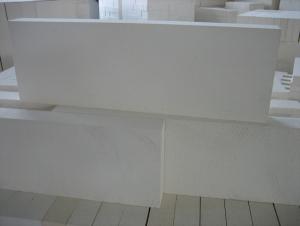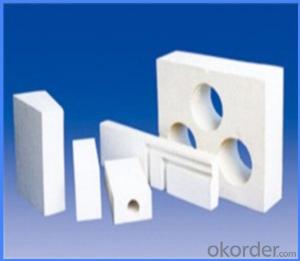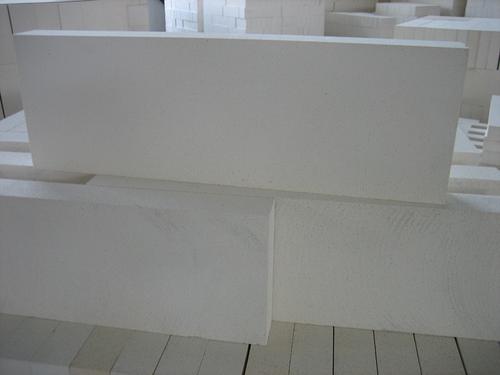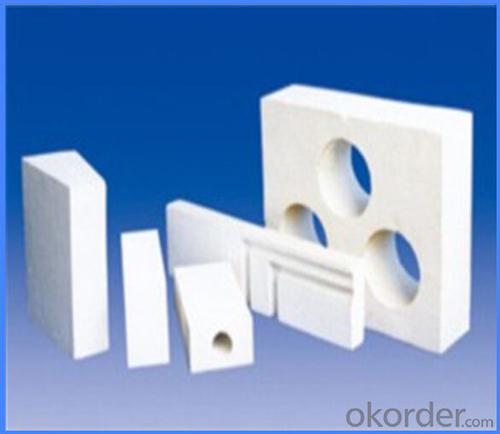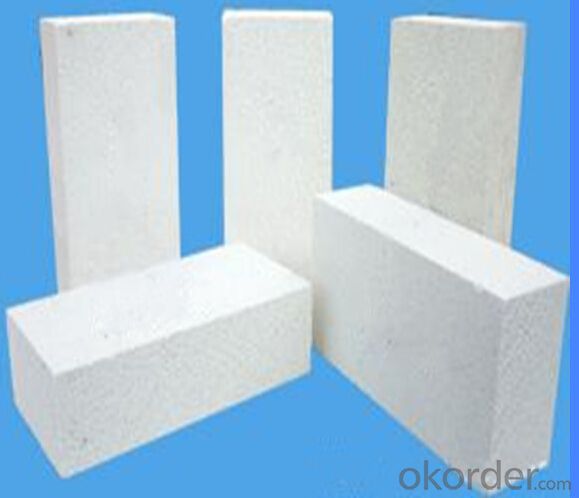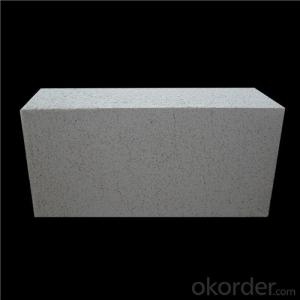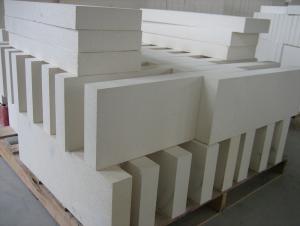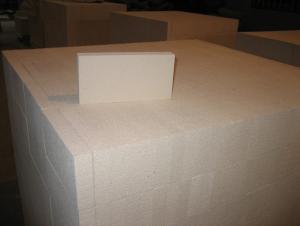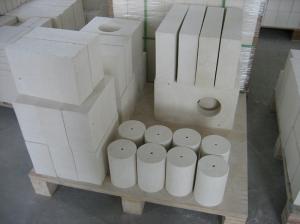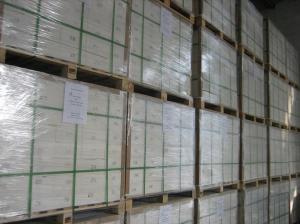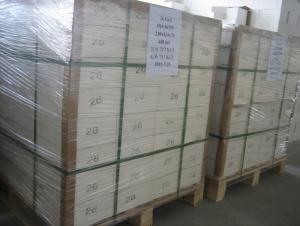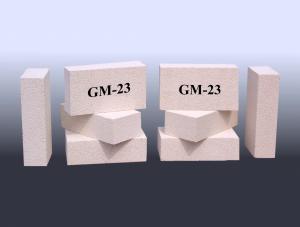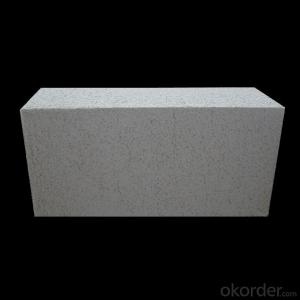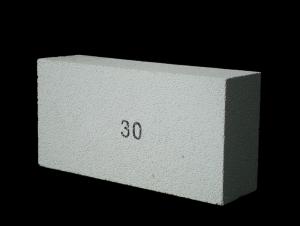Refractory Mullite Insulating Refractory Brick JM 34
- Loading Port:
- Shanghai
- Payment Terms:
- TT OR LC
- Min Order Qty:
- 20 m.t.
- Supply Capability:
- 20 m.t./month
OKorder Service Pledge
OKorder Financial Service
You Might Also Like
Okorder series heat insulation brick
Okorder series thermal insulation brick is an effective, energy saving, low carbon, environmental protection advanced, according to the ASTM standard manufacturing products. Okorder series products have all kinds of materials in the field of metallurgy, industrial furnaces, aluminum, the best Li Ning petrochemical and insulation, electric power and glass ceramics. They can be used as part of an insulation or not to melt. Products have been widely used in the following furnace, achieved satisfactory results.
Application of heat preservation brick
Metallurgical Industry: blast furnace, hot blast furnace, heating furnace, etc..
Petrochemical Industry: ethylene cracking furnace, hydrogen furnace, the main furnace, heating furnace, etc..
Ceramic industry: roller kiln, kiln, etc..
Glass industry: glass furnace regenerator, etc.
Carbon industry: carbon furnace, etc..
Aluminum electrolysis industry: aluminum reduction cell, etc.
Other industries: tunnel kiln, shuttle kiln, etc..
Advantages of heat insulation brick
Low thermal conductivity: many air holes will bring good thermal insulation effect, energy saving.
High crushing strength: high crushing strength, volume stability.
Low heat storage: small heat storage, absorb more heat, energy-saving effect is obvious.
Chundu: High-speed Rail, low content of alkali metal impurities.
Accuracy: the size of the brick machining precision, cutting and grinding the special shape, speed up the brick.
Technical Data
ITEM | GJM30 | GJM28 | GJM26 | GJM23 |
Classification Temperature, ℉/℃ | 3000/1650 | 2800/1540 | 2600/1430 | 2300/1260 |
Bulk Density,g/cm³ | ≤1.0 | ≤0.9 | ≤0.8 | ≥0.5 |
Reheating Linear Change, % | ≤0.9 (1550℃,12 h) | ≤0.8 (1510℃,12 h) | ≤0.7 (1410℃,12 h) | ≤0.5 (1230℃,12 h) |
Al2O3 Content, % | ≥75 | ≥65 | ≥55 | ≥45 |
Fe2O3 Content, % | ≤0.5 | ≤0.6 | ≤0.7 | ≤1.0 |
Thermal Conductivity: | ||||
800℃, w/m.k | ≤0.39 | ≤0.37 | ≤0.35 | ≤0.18 |
1000℃, w/m.k | ≤0.43 | ≤0.41 | ≤0.39 | ≤0.20 |
1200℃, w/m.k | ≤0.48 | ≤0.46 | ≤0.43 | --- |
Insulating brick
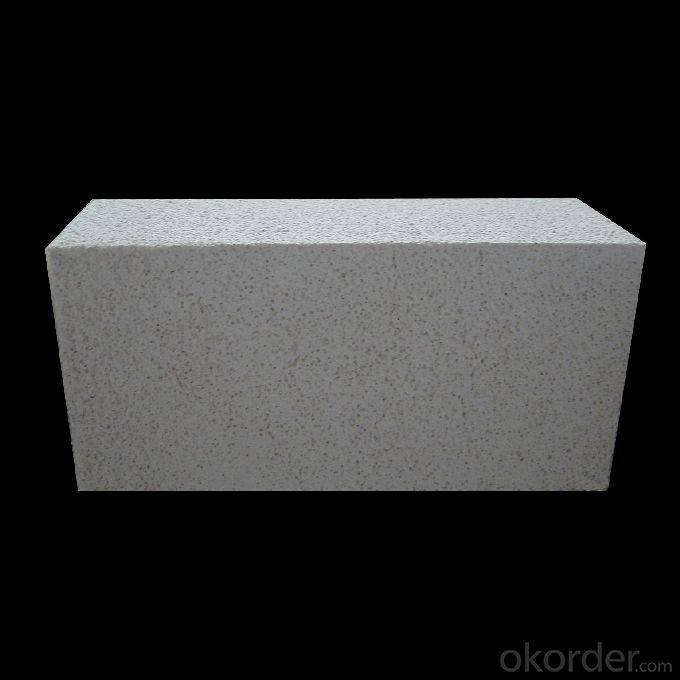
- Q: Are insulating fire bricks suitable for use in glass melting furnaces?
- Depending on the requirements of the furnace and the type of glass being melted, insulating fire bricks may be a suitable option for glass melting furnaces. These fire bricks are constructed from lightweight materials that have low thermal conductivity, enabling them to effectively retain heat and minimize energy loss in the furnace. This, in turn, can enhance the furnace's energy efficiency and decrease operational expenses. Nevertheless, it is essential to take into account the temperature and atmosphere within the glass melting furnace when selecting the appropriate insulating fire bricks. Glass melting furnaces function at extremely high temperatures, often surpassing 1500°C (2732°F). Some insulating fire bricks may not be capable of enduring such elevated temperatures and could deteriorate or even melt under these circumstances. Furthermore, the atmosphere within the glass melting furnace can influence the suitability of the insulating fire bricks. Certain types of these fire bricks may interact with specific gases or chemicals present in the furnace atmosphere, leading to degradation or contamination of the molten glass. Hence, it is crucial to choose insulating fire bricks that are compatible with the precise atmosphere and conditions within the glass melting furnace. To summarize, insulating fire bricks can be appropriate for use in glass melting furnaces, but careful consideration must be given to their temperature resistance and compatibility with the furnace atmosphere. Seeking guidance from specialists or suppliers who specialize in refractory materials for glass melting furnaces can help ensure the appropriate selection of insulating fire bricks for optimal furnace performance and glass quality.
- Q: Can insulating fire bricks be used as a structural material?
- Insulating fire bricks are primarily designed to provide thermal insulation in high-temperature environments such as furnaces, kilns, and fireplaces. While they have excellent insulation properties, they are not typically recommended for use as a structural material in load-bearing applications. Insulating fire bricks are made from lightweight refractory materials that are designed to minimize heat transfer. They have low density and are generally not as strong or durable as standard bricks or other structural materials. They are more prone to cracking, especially under heavy loads or mechanical stress. If used as a structural material, insulating fire bricks may not be able to support the weight or withstand the forces that traditional structural materials are designed to handle. This could lead to structural failure, compromising the safety and integrity of the building or structure. It is important to consult with a structural engineer or building professional to determine the appropriate materials for your specific project. They will take into consideration factors such as load requirements, safety regulations, and durability to ensure that the chosen structural materials are suitable and meet the necessary standards. In conclusion, while insulating fire bricks are effective for thermal insulation purposes, they are generally not recommended for use as a structural material due to their lower strength and durability compared to traditional structural materials.
- Q: Do insulating fire bricks expand and contract with temperature changes?
- Yes, insulating fire bricks do expand and contract with temperature changes.
- Q: How do insulating fire bricks contribute to reducing heat loss?
- Insulating fire bricks contribute to reducing heat loss by providing a high level of thermal insulation. These bricks are specifically designed to have low thermal conductivity, which means they are able to trap and retain heat within a given space. This insulation property helps to prevent the transfer of heat from one side of the brick to the other, effectively reducing heat loss. By using insulating fire bricks, heat can be conserved and efficiently utilized, resulting in energy savings and improved overall thermal efficiency.
- Q: Can insulating fire bricks be used in the construction of lime production ovens?
- Yes, insulating fire bricks can be used in the construction of lime production ovens. Insulating fire bricks are specifically designed to withstand high temperatures and provide excellent thermal insulation. Lime production ovens require materials that can withstand the extreme heat generated during the process of converting limestone into lime. Insulating fire bricks not only have a high heat resistance, but they also have low thermal conductivity, which helps to minimize heat loss and improve energy efficiency in the lime production process. Additionally, insulating fire bricks are lightweight and easy to handle, making them suitable for the construction of lime production ovens.
- Q: Can insulating fire bricks be used in low-temperature applications as well?
- Yes, insulating fire bricks can be used in low-temperature applications. These bricks are designed to have low thermal conductivity, making them suitable for retaining heat and insulating against temperature fluctuations. They can effectively withstand lower temperatures while still providing insulation and preventing heat loss.
- Q: Are insulating fire bricks suitable for use in the construction of blast furnaces?
- Yes, insulating fire bricks are suitable for use in the construction of blast furnaces. Insulating fire bricks are made from lightweight materials such as ceramics and have high insulating properties. These bricks have low thermal conductivity, which helps to reduce heat loss and increase efficiency in the blast furnace. Additionally, insulating fire bricks have excellent resistance to thermal shock, meaning they can withstand rapid changes in temperature without cracking or breaking. This is crucial in blast furnace construction, as the intense heat generated in the furnace can cause regular bricks to deteriorate quickly. Insulating fire bricks also have high compressive strength, ensuring their durability and longevity in the harsh conditions of a blast furnace. Overall, the use of insulating fire bricks in blast furnace construction can enhance energy efficiency, improve the performance of the furnace, and prolong its lifespan.
- Q: Are insulating fire bricks suitable for commercial or industrial applications?
- Yes, insulating fire bricks are suitable for commercial and industrial applications. They are commonly used in high-temperature environments such as furnaces, kilns, and ovens, where they provide excellent insulation and heat resistance. Their ability to withstand extreme temperatures and thermal shock makes them ideal for commercial and industrial settings where heat containment and energy efficiency are crucial.
- Q: Are insulating fire bricks resistant to gas permeation?
- Yes, insulating fire bricks are generally resistant to gas permeation. These bricks are specifically designed to have low porosity, which means they have a minimal amount of open spaces for gases to pass through. This characteristic makes them highly effective at preventing the permeation of gases. Additionally, insulating fire bricks are often made from materials such as alumina, which have excellent resistance to high temperatures and chemical reactions, further enhancing their resistance to gas permeation. Overall, insulating fire bricks are a reliable choice for applications where gas permeation needs to be minimized or prevented.
- Q: Are insulating fire bricks porous?
- Indeed, porousness is inherent to insulating fire bricks. It is this attribute that enables them to exhibit low thermal conductivity. Comprised of ceramic materials, these bricks possess a considerable amount of minuscule air pockets or empty spaces. These cavities serve to capture and decelerate the flow of heat. Furthermore, this porosity renders the bricks lightweight and resilient against thermal shock. The efficacy of these insulating fire bricks in retaining heat and furnishing efficient insulation is unequivocally tied to their porous configuration.
Send your message to us
Refractory Mullite Insulating Refractory Brick JM 34
- Loading Port:
- Shanghai
- Payment Terms:
- TT OR LC
- Min Order Qty:
- 20 m.t.
- Supply Capability:
- 20 m.t./month
OKorder Service Pledge
OKorder Financial Service
Similar products
Hot products
Hot Searches
Related keywords
